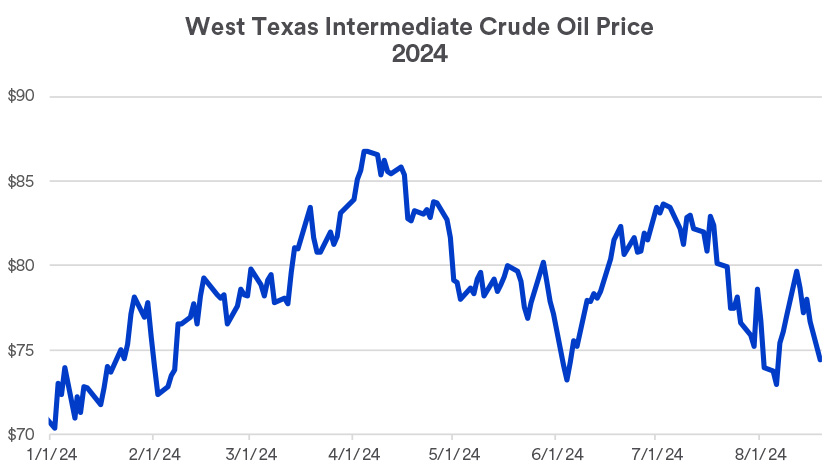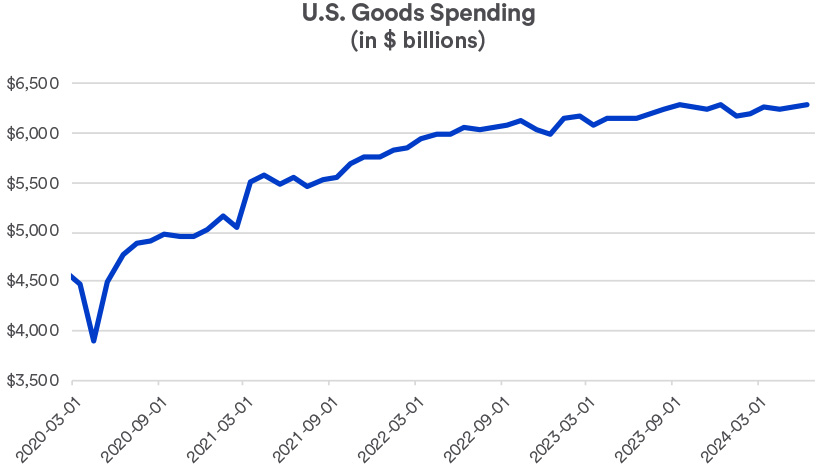Ongoing semiconductor chip concerns
The demand is growing for semiconductor chips. In a previous era, chips were mostly associated with electronics, primarily computers. Over time, products ranging from refrigerators to automobiles are dependent on semiconductor chips. Dating back to late 2020, a backlog of chip orders led to a shortage of many products, most notably automobiles. Higher costs for new and used cars were another major contributor to the rapid increase in the overall inflation rate. Supplies of chips began to improve in 2022, due to a combination of increased production and flattening consumer demand for goods. As a result, price pressures eased. “Over the past couple of years, consumers spent more on experiences and spent less on goods,” says Haworth. “If the environment changes, and consumer demand for cars and other durable goods soars, it could put more pressure on the market, but that’s not the situation today.”
The new CHIPS and Science Act incentivizes construction of domestic semiconductor manufacturing plants. It includes a federal government financial commitment to support the development of the domestic semiconductor industry. “This represents a deeper investment in U.S. chip manufacturing infrastructure,” says Haworth. “It will take three-to-five years for these facilities to be online, so it doesn’t solve any immediate supply concerns should they arise.”
Labor shortages and other challenges
Some issues persist to insufficient numbers of workers to fill available American jobs. Based on recent jobs data, more than one position is open for every available worker, demonstrating a need for more workers to fill available jobs.2 “The number of job openings is slowly creeping down and the gap of workers to fill available jobs is closing, but an imbalance remains,” says Haworth.
“The major challenge for many employers is whether they can attract and retain sufficient quality labor to meet their production demands,” says Hainlin.
The International Longshoreman’s Association is currently in negotiations on a new contract. Any delays that result in work stoppages might create new issues, but talks are still ongoing.
Where we go from here
The clearest sign that supply chain issues are under control for now is inflation’s continued decline. “We’re not at the same point we were during the peak of supply chain issues a few years ago,” says Haworth, “but there are some risks.” Haworth notes that while goods demand is relatively flat, “We also aren’t seeing a stockpiling of inventories of goods, so if demand suddenly picked up, a production ramp-up might be required.”
Despite higher interest rates, the U.S. economy demonstrated resilience in 2023, avoiding a recession. The economy grew by an annualized rate of 2.5% in 2023, an unexpected improvement on 2022’s growth rate of 1.9%. Growth started slower in 2024’s first quarter, with the economy expanding at an annualized rate of 1.4%. The pace picked up in the second quarter, to an annualized growth rate of 2.8%.3 Persistent consumer demand and a strong job market continue to influence economic growth. Investors will closely monitor these data points in the months ahead to determine the impact on corporate profits and stock prices.
Talk with your wealth planning professional to determine how economic developments such as inflation trends may impact your own investment strategy and your long-term financial goals.





